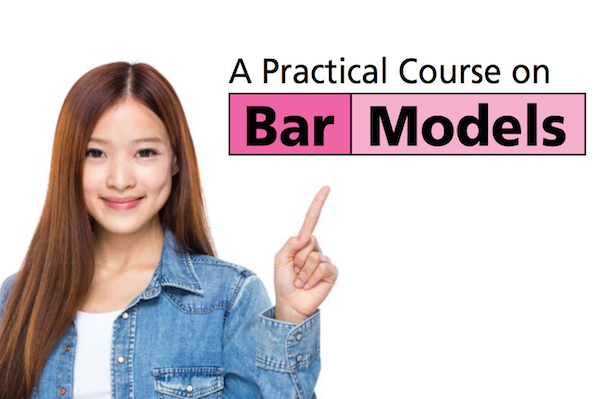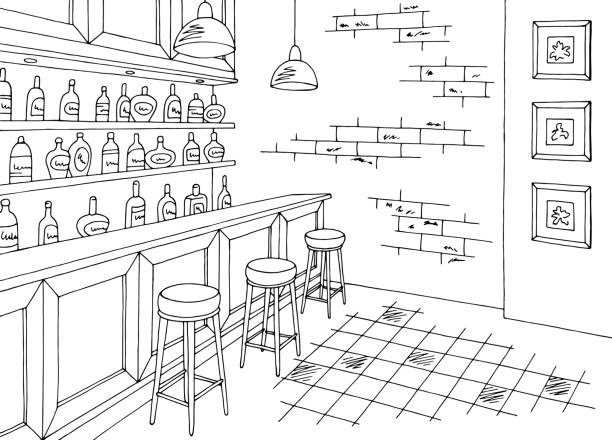Explore the benefits of bar model drawing techniques for primary students
Exploring Bar Model Illustration Techniques: A Comprehensive Guide to Picturing Math Concepts
Bar design attracting techniques work as an important source for both instructors and pupils in picturing mathematical concepts. These designs streamline complex numerical partnerships, aiding in the understanding of enhancement, subtraction, multiplication, and department. This guide lays out effective techniques for applying bar versions, fostering active interaction and real-world links. As viewers explore the useful applications and mentor pointers, they will certainly uncover exactly how these methods can change their strategy to maths.
Understanding the Basics of Bar Model Drawing
Bar design drawing offers as an effective aesthetic tool in mathematics, helping with the understanding of problem-solving approaches and mathematical partnerships. This strategy entails standing for numbers and their partnerships with rectangle-shaped bars, making it much easier to picture procedures such as addition, reduction, department, and multiplication. Each bar's length represents a particular worth, enabling learners to contrast amounts and comprehend proportions plainly.
To develop a bar design, one begins by identifying the trouble's crucial elements, commonly damaging it down into components that can be aesthetically represented. In a basic addition trouble, two bars can be drawn, with their sizes representing the addends. The mixed length illustrates the amount. Furthermore, bar versions can be adapted for more intricate issues, consisting of portions and ratios, by changing benches appropriately. Mastering these fundamentals lays a solid foundation for reliable analytic and much deeper mathematical comprehension.
Advantages of Using Bar Designs in Math
Using bar versions in mathematics supplies various benefits that enhance discovering and comprehension. These graphes aid pupils in understanding intricate concepts by damaging them down right into workable elements. Bar versions offer a clear structure for illustrating partnerships in between numbers, making abstract ideas much more concrete. They advertise a much deeper understanding of mathematical operations and help with analytic by permitting learners to imagine the information they are dealing with.
Additionally, bar designs sustain the development of vital assuming abilities, as students should examine and analyze the visual details to reason. This technique urges energetic involvement with the product, enhancing retention and mastery of mathematical concepts. By fostering a strong structure in visual proficiency, bar versions encourage students to come close to numerous mathematical difficulties with self-confidence. Generally, the assimilation of bar designs into mathematics education proves advantageous in cultivating both comprehension and logical capacities amongst pupils.
Using Bar Models to Addition and Reduction
Bar designs function as a reliable tool for visually standing for enhancement and reduction problems. By illustrating the partnership in between numbers, they improve understanding and assist in analytical. On top of that, real-life applications of these versions can assist learners grasp mathematical principles in functional contexts.
Representing Addition Aesthetically
Visual help can significantly boost their understanding of these operations when pupils come across addition and reduction problems. Bar versions serve as reliable tools for standing for enhancement. By dividing a rectangular shape into sectors that represent the numbers included, students can envision the relationship in between the quantities. As an example, if a student requires to include 3 and 5, they can produce a bar separated into two areas: one area representing 3 and the other standing for 5. This clear representation not just streamlines the addition process however additionally reinforces the idea of combining amounts. As students manipulate these aesthetic aids, they develop a much deeper understanding of addition, causing boosted problem-solving abilities and better self-confidence in their mathematical abilities.
Subtraction With Bar Designs
Reduction is frequently viewed as a much more intricate procedure than enhancement, bar versions can properly clarify this process for students. By visually representing the quantities included, trainees can much better comprehend exactly how numbers associate to one another. In a bar version for reduction, one bar stands for the total amount, while an additional shows the amount being deducted. This aesthetic distinction helps students grasp the concept of "taking away." As an example, if a bar reveals 10 devices, and one more bar representing 4 systems is gotten rid of, trainees can quickly see that 6 units remain. This technique not just promotes understanding of subtraction but also help in establishing analytical skills, permitting trainees to imagine their mathematical thinking and improve their overall understanding of mathematical ideas.
Real-Life Application Examples
Recognizing reduction through bar versions lays a foundation for applying these strategies in real-life situations. In various contexts, such as budgeting or buying, people can imagine how much cash remains after expenditures. For instance, if an individual has $50 and spends $20, a bar version can represent the complete amount and the invested portion, highlighting that $30 is left. In addition, parents can use bar versions to aid kids understand the number of more things need to be contributed to finish a set, such as having 3 apples and requiring five. This graph simplifies complicated troubles, assisting in understanding and retention. Ultimately, bar versions act as efficient devices in day-to-day decision-making, enhancing mathematical understanding in functional situations.
Picturing Reproduction and Division With Bar Designs
In checking out the application of bar versions for reproduction and division, it is crucial to understand their foundational ideas. Creating multiplication designs enables students to envision relationships between numbers, while efficient department approaches can be illustrated via these visual aids. This technique boosts understanding and problem-solving skills in mathematics.
Comprehending Bar Designs
Bar versions function as an effective aesthetic device for highlighting the concepts of multiplication and division. They enable learners to represent mathematical connections in a structured format, helping with a deeper understanding of these operations. In multiplication, bar designs show groups of equal size, permitting people to envision the complete quantity when integrating these teams. On the other hand, in department, bar designs assist portray how a total is divided right into smaller sized, equal parts, clarifying the principle of dividing. By utilizing these visual aids, pupils can realize the underlying principles of multiplication hop over to here and department better. This technique not only enhances understanding however also sustains analytical skills, making bar versions an indispensable asset in mathematical education and learning.
Building Multiplication Models
Creating multiplication designs using bar layouts supplies a clear technique for visualizing the procedure of reproduction. These versions make it possible for learners to represent reproduction as groups of equivalent parts, making abstract principles extra concrete. For example, to illustrate (3 times 4), a trainee can draw one bar separated right into 3 equal segments, each representing 4 systems. Additionally, creating a 2nd bar with the exact same length reinforces the understanding of repeated enhancement, as each sector represents one team. This graph not only aids in comprehending reproduction however likewise boosts analytical skills. By employing bar designs, students can better comprehend connections in between numbers and establish a robust foundation for more complex mathematical principles, causing raised confidence in their capabilities.
Imagining Division Techniques

Solving Word Troubles Making Use Of Bar Design Techniques

In a trouble including addition and subtraction, pupils can draw different bars for each quantity and after that manipulate them to discover the solution. This procedure not just clears up the issue yet likewise cultivates a much deeper theoretical understanding. Additionally, bar models can be adapted for numerous kinds of word problems, making them versatile throughout different mathematical subjects. Inevitably, utilizing bar models can significantly boost students' analytic abilities by providing a clear aesthetic path to reach the appropriate answer.
Integrating Bar Designs in Various Math Topics
Bar models can be seamlessly integrated into different math subjects, enhancing students' understanding of concepts beyond fundamental arithmetic. In algebra, these aesthetic devices help in standing for formulas and inequalities, enabling learners to picture relationships in between variables. When dealing with geometry, bar designs can illustrate the residential or commercial properties of forms and spatial reasoning, helping students understand ideas like location and boundary properly. In data, bar models help with the interpretation of data sets, permitting pupils to contrast amounts and identify patterns aesthetically. Additionally, incorporating bar models within measurement subjects help in recognizing devices and conversions by providing a substantial representation of amounts. By utilizing bar versions across various mathematical areas, educators can promote a deeper understanding of complicated principles, thus boosting problem-solving skills and advertising essential thinking (bar model drawing techniques). This flexibility shows the energy of bar versions as a foundational tool for pupils in their mathematical journey
Tips for Teaching Bar Models Efficiently
Integrating bar designs right into training techniques calls for thoughtful Home Page approaches to optimize their performance. Educators needs to start by presenting bar versions with straightforward, relatable instances that students can easily grasp. This helps to build self-confidence and knowledge with the principle. Progressively boosting the complexity of problems permits students to use their skills gradually. Additionally, teachers should encourage students to develop their very own bar models, promoting active involvement and possession of their understanding.
Including collaborative tasks can also boost understanding, as trainees review and fix issues in teams. Continual responses is vital; instructors ought to give useful discourse on students' bar version depictions to lead enhancement. Linking bar models to real-life situations enhances their importance, assisting trainees see the practical applications of their mathematical skills. By applying these approaches, educators can successfully harness the power of bar designs in their mathematics direction.
Frequently Asked Concerns
Can Disallow Designs Be Utilized in Various Other Topics Besides Mathematics?
Bar versions can without a doubt be utilized in numerous subjects past math. They properly highlight ideas in science, social research studies, and language arts, aiding to aesthetically stand for relationships, processes, and ideas for improved understanding throughout techniques.
What Age Group Is Best Matched for Knowing Bar Designs?
Bar versions are best suited for kids ages 7 to 12, as they develop concrete reasoning skills throughout this duration (bar model drawing techniques). At this age, pupils can properly understand abstract concepts via graph and analytic methods
Exist Digital Tools for Creating Bar Models?

Exactly How Can I Evaluate Pupil Comprehending of Bar Designs?
Evaluating pupil understanding of bar designs can involve tests, empirical analyses, and seminar. Educators may additionally examine students' completed models and their ability to clarify their reasoning, ensuring a thorough evaluation of understanding.
What Prevail Mistakes When Utilizing Bar Models?
Common errors when using bar designs consist of misstating amounts, failing to properly label bars, puzzling addition and subtraction, ignoring to use constant scales, and forgeting the significance of clear aesthetic separation between various elements.
In enhancement, bar versions can be adapted for extra complicated troubles, including fractions and proportions, by readjusting the bars accordingly. Subtraction is commonly perceived as a much more intricate operation than addition, bar versions can successfully clarify this procedure for students. In a bar design for reduction, one bar stands for the total, while one more shows the amount being subtracted. If a bar shows 10 units, and an additional bar representing 4 units is removed, trainees can quickly see that 6 devices continue to be. When dividing a total into equal groups, trainees can draw a long bar to represent the whole and then segment it into smaller bars that indicate each group.